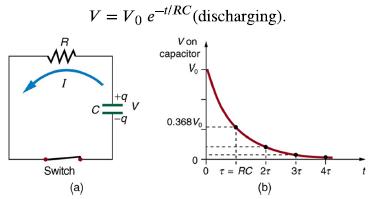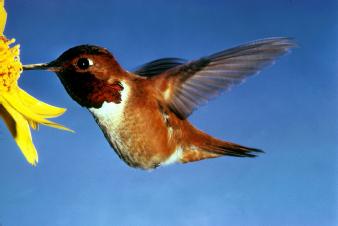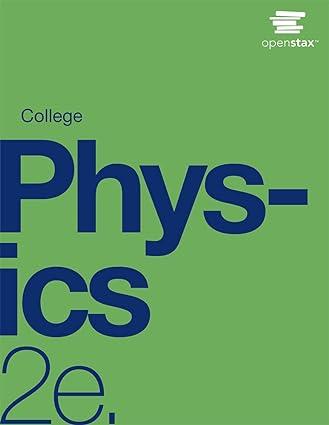High-speed flash photography was pioneered by Doc Edgerton in the 1930s, while he was a professor of
Question:
High-speed flash photography was pioneered by Doc Edgerton in the 1930s, while he was a professor of electrical engineering at MIT. You might have seen examples of his work in the amazing shots of hummingbirds in motion, a drop of milk splattering on a table, or a bullet penetrating an apple (see Figure 21.39). To stop the motion and capture these pictures, one needs a high-intensity, very short pulsed flash, as mentioned earlier in this module.
Suppose one wished to capture the picture of a bullet (moving at 5.0 x 102 m/s) that was passing through an apple. The duration of the flash is related to the RC time constant, τ. What size capacitor would one need in the RC circuit to succeed, if the resistance of the flash tube was 10.0 Ω? Assume the apple is a sphere with a diameter of 8.0 x 10-2 m.
Strategy
We begin by identifying the physical principles involved. This example deals with the strobe light, as discussed above. Figure 21.38 shows the circuit for this probe. The characteristic time of the strobe is given as τ=RC.
Data given in Figure 21.38

Data given in Figure 21.39

Step by Step Answer:






